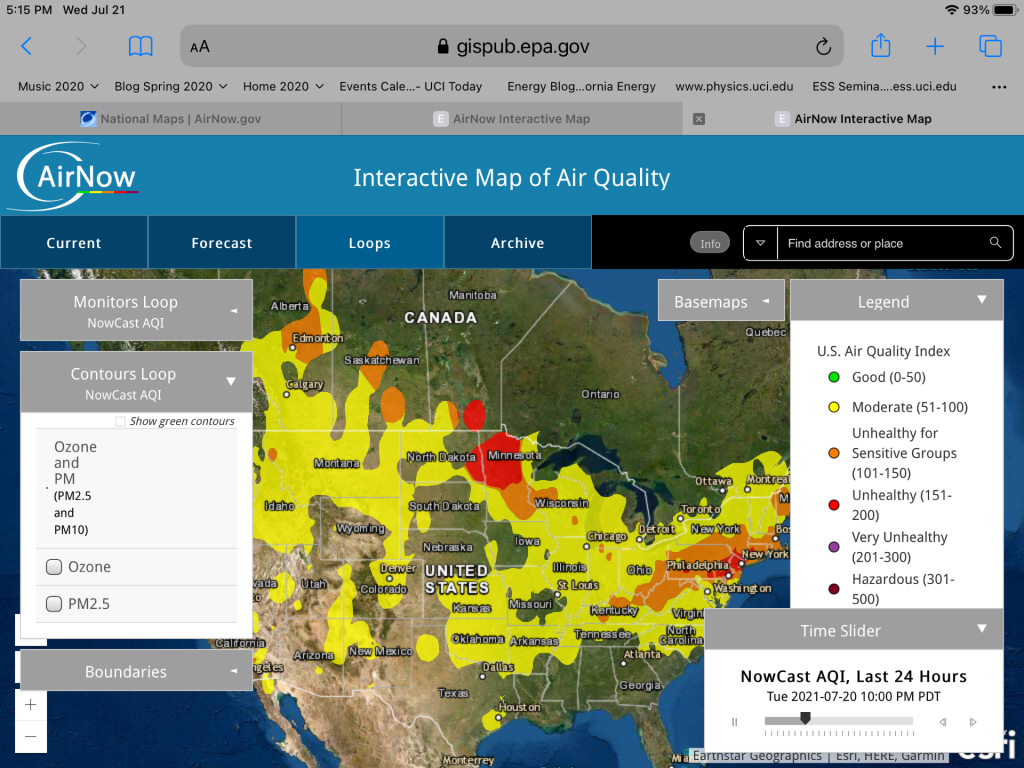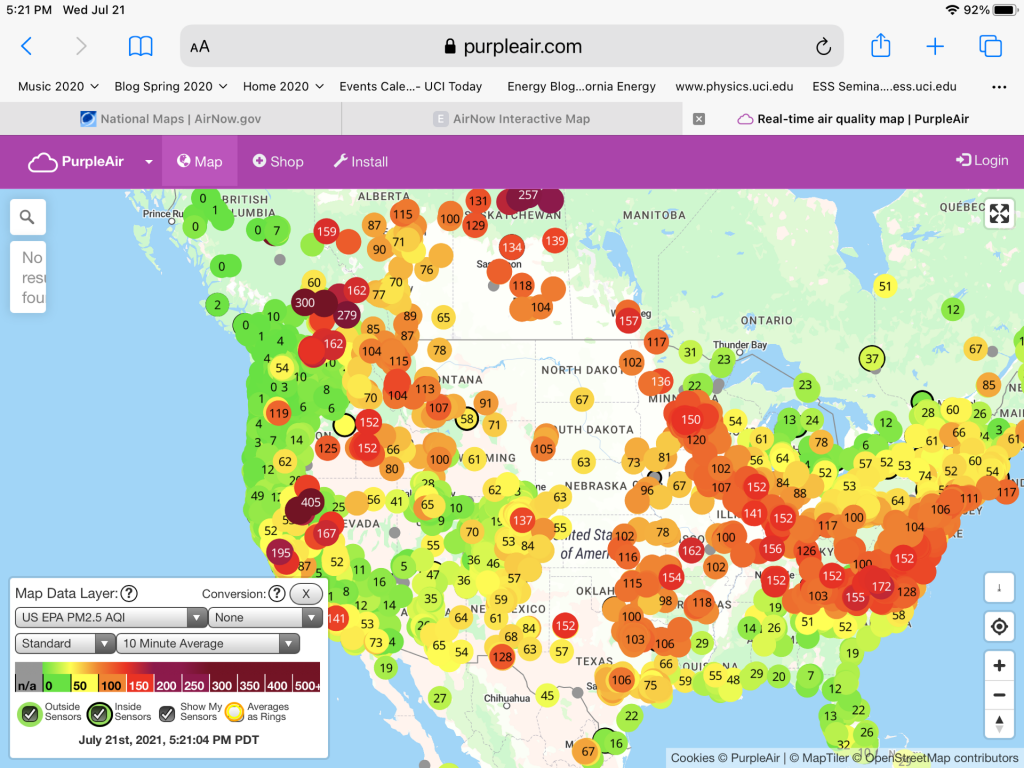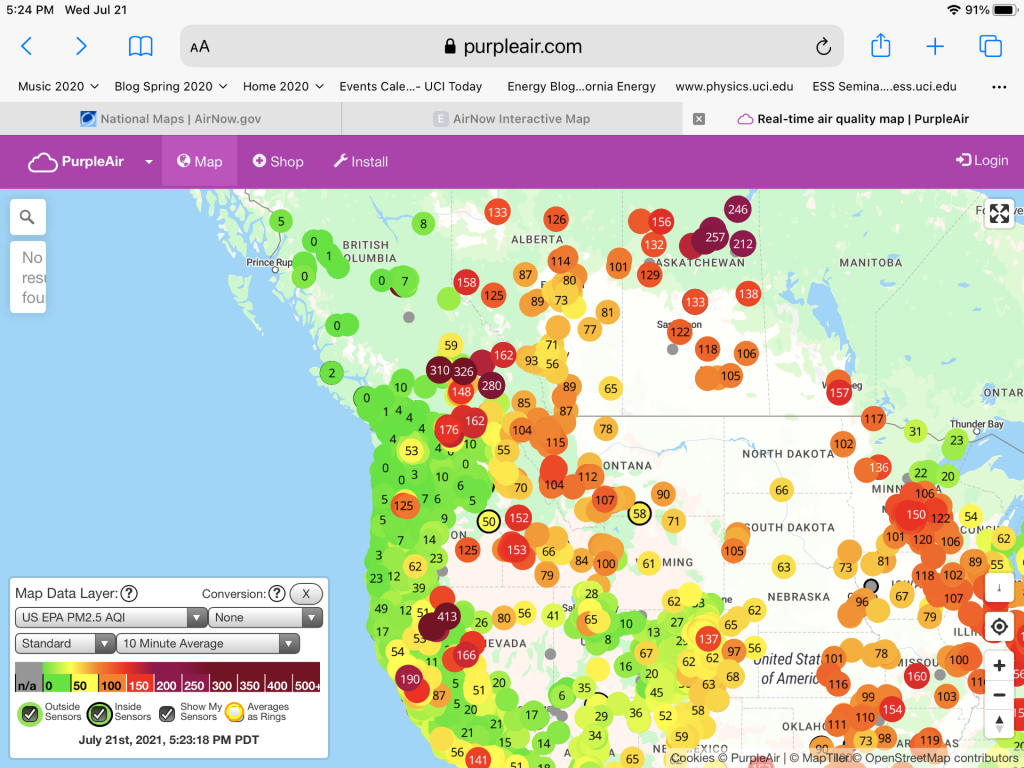National Air Quality Maps from Western Wildfires
There are over 80 wildfires in the Western US, and they have burned over a million acres. At 640 acres per square mile, this is over 1,560 square miles. An acre is about the size of a football field. The air pollution from the Western US and Canadian wildfires have moved to the Chicago area, and on to the Northeastern states. We illustrate this with two quantitative air quality maps and a NY times map.
AirNow Ozone plus Particulate Matter of 2.5 millimeter and 10 millimeter size particles (PM2.5 and PM10).
The Green or good range of 0-50 ppm (parts per million) is not shown. The Yellow is Moderate (51-100 ppm) is already very fazy. The Orange (101-150 ppm) is Unhealthy for Sensitive Groups, like kids with asthma. The Red is Unhealthy for everybody. Minnesota had some time in the Dark Red Very Unhealthy (201-300 ppm).
PurpleAir maps of their sensor readings of PM2.5 in parts per million.
National PurpleAir Map
Western States and Western Canada PurpleAir Map
New York Times Time Evolution Map (time slice)
No, the entire United States is NOT on fire. This map of air pollution is created by the NY Times Halloween Effects Division.
The PurpleAir maps are at the time of composition. Yes, I did use my Editorial License to pick out the most illustrative time slices of time sequences.
If you want my stirring account of my home being in the downdraft of a nearby wildfire near Irvine, CA, see here. The PurpleAir readings at UC Irvine reached an incredible PM2.5 of 669 ppm, from the Silverado Canyon fire. I fled to Los Angeles, just from the air pollution.




